So, where were we?
Ah, yes: Harold Kovner.
The man with a hundred different lives, going back to the 1930s, each more intriguing and baffling than the last.
A Zelig-like character, popping up in different parts of the film business through to the 1960s.
An invisible, background figure who was nevertheless connected to titans such as Orson Welles and 20th Century Fox.
An unlikely and anonymous early adult filmmaker who rarely used his own name.
A respected audio engineer who produced tapes of the highest quality sound, whose nickname was Mr Rewind and Fast Forward.
And how was he involved in a high-profile divorce court case, featuring a female sex actor from one of his films?
You can read the earlier parts of Harold Kovner’s story here.
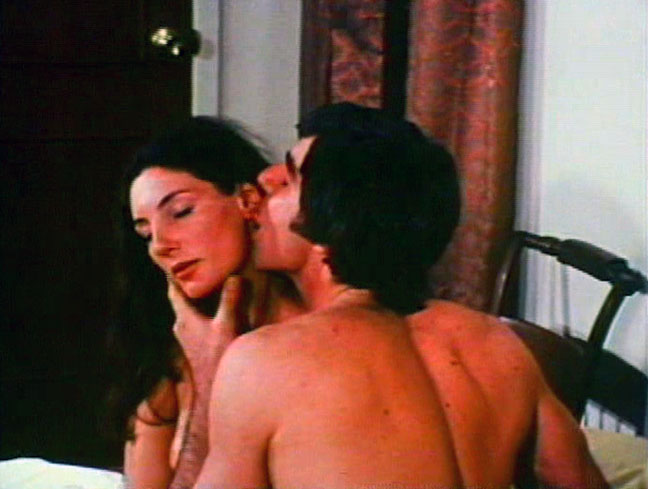 ‘Jean Roman’ and Harry Reems, in A Time to Love (1971)
‘Jean Roman’ and Harry Reems, in A Time to Love (1971)
———————————————————————
1971 – Harold and ‘A Time to Love’
By the spring of 1971, Harold Kovner was in his mid 50s – and he’d led a prolific, if schizophrenic, existence. He’d worked in the entertainment business from the fringes to the mainstream, experiencing bankruptcy, financial success, and most points in between. He’d owned various film-related companies, served as a board member for a 20th Century Fox subsidiary, part-owned a Manhattan burlesque theater, shot socially-conscious films, developed a freelance audio engineer business, and become a secretive director of softcore sex feature films shot largely in California – as well as 8mm hardcore shorts in his own downtown Manhattan studio.
Sex films had rarely been his primary focus but, according to his friends from the time, he fervently believed that explicit movies were on the verge of breaking through to a mainstream audience for the first time – and that he was ideally placed to take advantage: after all, he’d already shot adult films of different stripes, had a network of distribution and theater contacts, and could call upon a number of the more reliable performers.
With an eye to this, Harold wrote a script (together with his elusive partner, Jay Campbell) called ‘A Time to Love.’ It told the story of two college friends – one a playboy and successful TV star, the other a family man and accounting exec at an ad company – who meet up for the first time in years and compare their lives. Harold showed it to his sponsor at Cosmos Films, Teddy Kariofilis, who liked the idea and offered funding through his Kario Productions company.
Harold insisted this film needed to be more serious that the other west coast efforts he’d helmed for the Greeks. Part of this meant having a proper music soundtrack, and not the usual library stock music they’d used in the past. Harold had recently recorded demos with John Braden, a New York singer songwriter, so he approached Braden suggesting he compose original songs for the film.
*
Rewind – John Braden
John Stuart Braden, Jr. was a talented, earnest, and intelligent musician. He was also a comically, unapologetic, laid-back, naive hippie. (Once, when applying for employment as a Western Union delivery cyclist, an interviewer was on the verge of giving him a job, and asked John a final question: had John ever shot up marijuana, the interviewer asked? John replied, “Well, no… I’ve smoked marijuana, but the only thing I’ve ever shot up is heroin.” He didn’t get the job.)
John was born in Asheboro, North Carolina, on January 17th, 1946. After graduating from Southwest Miami High School in 1965, he hitchhiked to New York City and lived there for the rest of his life. He played his folk songs in Washington Square Park to anyone who would listen, and picked up gigs in New York folk clubs. His musical ability created ‘new Dylan’ expectations, and in November 1968, Billboard announced that John had signed with A&M Records.
A&M was a big deal: it had been founded in 1962 by Herb Alpert and Jerry Moss, and became home to artists of the caliber of Burt Bacharach, the Carpenters, Captain and Tennille, the Flying Burrito Brothers, Quincy Jones, and Liza Minnelli, and later, to other folk artists such as Joan Baez, Phil Ochs and Gene Clark.
John released an eponymous album on the label in 1969 with a stellar array of backing musicians: Ry Cooder played guitar, as did Chris Ethridge and Sneaky Pete of Flying Burrito Brothers, and they were joined by Richard Bell, keyboardist for Janis Joplin and The Band, jazz musician Paul Horn, and folk musician Bruce Langhorne. Michael Vosse, manager for the Flying Burrito Brothers, co-produced the record, and it was released with Woodstock only a few months away in August 1969. The timing seemed perfect. With such an array of talent, how could the record be anything other than a runaway success, catapulting John into superstardom?
Somehow, John snatched defeat from the jaws of victory, and the release died a death. Today the record is virtually forgotten, never having been re-released, and, even in this era of media ubiquity, is unavailable on Spotify or YouTube.
 John Braden’s record on A&M Records
John Braden’s record on A&M Records
John took the failure philosophically but it was back to the drawing board – which meant writing and contributing to various musicals, a number which were produced at La MaMa Experimental Theatre Club in the East Village of Manhattan. In 1971, he hired Harold to record some demos for him. They got on well, and when Harold asked him to write songs for ‘A Time to Love’, John was short of cash and gratefully accepted the challenge.
*
1971 – Harold and ‘A Time to Love’: Harry Reems, Howard Blakey, and Carla
According to production records, shooting ‘A Time to Love’ spanned several months in mid-1971.
The production began in April on the campus of Yale University in New Haven, Connecticut, with an establishing sequence featuring various of the institution’s landmark buildings. (The fictional college in the film is ‘Dale University’ so the signs show the name with the initial ‘Y’ in ‘Yale’ covered up.)
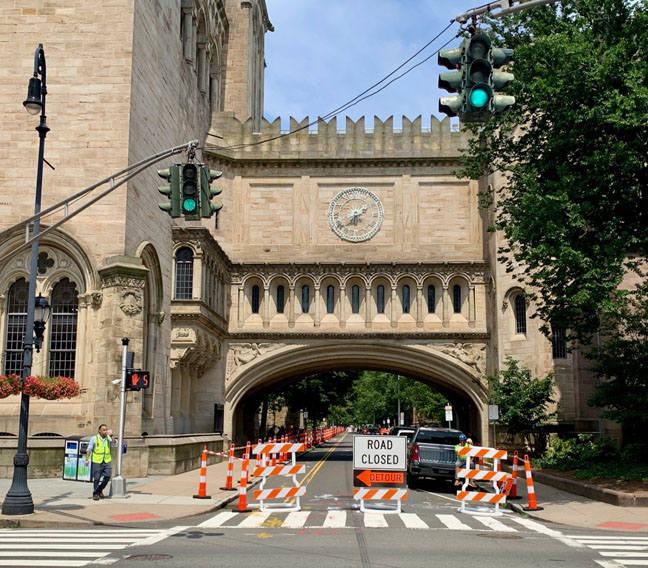 The High Street Arch, at Yale University
The High Street Arch, at Yale University
Harold took an assistant and two actors, Harry Reems and Howard Blakey, to film the initial exterior scenes at the university. He knew Reems from loops he’d shot at his Tribeca studio, and Reems agreed to act as an unofficial casting intermediary to recruit his friends and contacts. Many, such as Tina Russell, Arlana Blue, and Tallie Cochrane came from the same loop scene, but others were entirely new to sex films. Blakey, one of the two male leads, an aspiring actor and keen churchgoer, was an exception who Harry had met at an audition for an avant-garde play. Barbara Grumet was a fellow left-wing activist who Harold knew from political demonstrations in the late 1960s.
Another newcomer to sex films was one of Harry’s girlfriends, Carla.
 Harry Reems, in ‘A Time to Love’
Harry Reems, in ‘A Time to Love’
*
Rewind – Carla
Carla was born in 1949, a New Yorker though not from the big city. She was raised in the small hamlet of Glen Head (population 4,500) within the town of Oyster Bay on the north shore of Long Island. Teenage friends remember her as a carefree, happy-go-lucky, and popular girl, who worked hard and excelled in academics.
At 13, her yearbook quoted her as liking “most boys” but hating “boys who think they are God’s gift to womankind.” Three years later, her entry recorded that she was an “enthusiastic skier, always on time, sociable, and fun-loving” and planned to attend college before perhaps pursuing a career in psychology.
In high school, former schoolmates remember Carla being a smart, bookish, and studious teen, known for her tireless activity in extra-curricular activities: she was a committee member for the American Field Service arranging exchange overseas students to attend U.S. schools, she volunteered as a student guide helping parents and visitors to her school, and was a member of the Library Society, the Latin Society, the Future Teachers of America, as well as starring for the basketball team and the athletics club.
After graduating, she moved into Manhattan in 1969, responding to a newspaper ad offering a room in an apartment in the Village with a couple of other girls. For the next few years, she took a series of temporary admin jobs, signed up for courses at NYU, and worked in bars on Bleecker Street. One friend from the time said simply, “She was peaceful, quiet, loved nature, and would often talk with the trees.”
Somewhere along the line she met aspiring actor Herb Streicher, who’d started to supplement his meagre acting income by having sex in front of a series of 8mm cameras. Herb would later become Harry Reems, but Carla only ever knew him as Herbie. Years later, Harry remembered she was perplexed but amused at finding out about his occasional exhibitionism. Theirs was a casual relationship, free of possessiveness, and in the spirit of the time, Harry told Carla how she could earn some quick money for an hour’s work if she ever wanted to make short sex films. He gave her the number for Bob Wolfe, one of Harold’s more prolific competitors in the sex loop business.
Harry recalled that she’d seemed reluctant, almost dismissive, at the idea, but a few days later she surprised him when she mentioned she’d gone to Wolfe’s 14th Street basement studio to seek work. Wolfe had taken a nude Polaroid of her and promised to be in touch. On the back of the Polaroid, Wolfe had written her name and the note: ‘Herb Stryker’s friend.’
 Carla’s Polaroid taken by Bob Wolfe
Carla’s Polaroid taken by Bob Wolfe
*
1971 – Harold and ‘A Time to Love’: Harry Reems, Howard Blakey, and Carla
Harold shot most of the footage for ‘A Time to Love’ in April, May, and June 1971, working closely with Harry and Howard.
A decade ago, I met up with and had coffee with Howard Blakey. I found his name and number online, and called him on the spur of the moment. He was friendly but reluctant to meet once I told him that I wanted to talk about his memories of ‘A Time to Love.’ He still lived in the East Village, possibly in the same apartment he was in back in 1971, he couldn’t remember for sure. Eventually we met at Phebe’s Tavern on the corner of East 4th and Bowery, which Howard assured me had definitely been around in 1971.
He talked about how he’d once hoped for a proper acting career along the lines of his hero, Clint Eastwood. It was the same old story however: an ever-decreasing number of ever-smaller parts in ever-lower budget productions until one day, he realized he couldn’t even call himself an actor. ‘A Time to Love’ hadn’t been his first sex film, Howard recalled, but they’d all been acting parts, never requiring him to have sex. I pointed out that ‘A Time to Love’ was indeed a hardcore sex film, and that he had in fact featured in explicit scenes. Howard pushed back firmly, so I let the matter drop. He still remembered Harry and Carla, but Harold was a blank in his memory. When I asked if he wanted to have a copy of ‘A Time to Love’ for old times sake, he declined, and made his excuses. When I last looked Howard up a few years later, I found a death notice.
 Howard Blakey, in ‘A Time to Love’
Howard Blakey, in ‘A Time to Love’
Most of ‘A Time to Love’ consisted of a series of routine sex scenes, punctuated by shots of Manhattan theater marquees, including the Paris Theatre showing Lewis Gilbert’s romantic hit ‘Friends’ (famed for its Elton John score), Robert Kaylor’s ‘Derby,’ and Don Siegel’s ‘The Beguiled’ (paired on a 42nd Street double bill with a reissue of Bryan Forbes’ ‘Deadfall’). In between the sex scenes is stock footage of foreign locations such as Paris, London, Rome, Berlin and even Mao’s China, as well as party footage of Twiggy, George Harrison, and John Lennon in late ’60s regalia.
According to one of his associates from the time, Harold wanted his film to be socially redeeming in order to avoid any risk of being declared obscene – so he padded out the movie’s running time with stock footage that he’d acquired over the years from various left-wing and progressive documentaries he’d worked on. Ever the socialist, this consisted of footage of farmers, starving African children, and nuclear bomb testing, to which he added a voice-over decrying war, criticizing our consumer society and manipulative advertising, and stressing the need to preserve the environment – with an archive cameo featuring (who else?) Ralph Nader. You could take Harold away from socialist activism for a moment, but you couldn’t take socialism away from Harold.
He edited it all into an extended running time of 83 minutes in his studio with the assistance of Carla – who he used in two scenes in the film, one of wearing a jet black wig – and the film was released on December 27, 1971 at the Cameo Arts theater, featuring John Braden’s folk pastiche soundtrack. It featured the tagline, ‘A New Dimension in Adult Entertainment!’
‘Love is the Thing’ – John Braden’s theme to ‘A Time to Love’
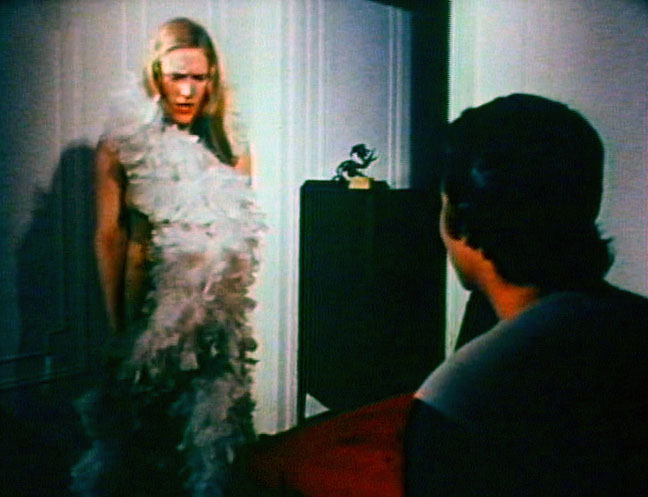 Carla and Harry, in ‘A Time in Love’
Carla and Harry, in ‘A Time in Love’
*
Fast Forward – Carla, aka Cedar Houston
Carla and Harry split shortly after the ‘A Time to Love’ shoot – though Harold kept in touch with her. A friend of Harold still remembers his affection for her – indeed, he found her work in his studio for several years afterwards.
As for Harry, he still remembered Carla fondly when interviewed by The Rialto Report later in life, but admitted he’d hardly seen her after the Kovner film. He wondered aloud what she’d done afterwards, and was surprised to learn that she continued to make sex films, appearing in over 30 features and loops through to 1976, with a changing series of credit names, including Cedar Houston, Carla Code, Cedar Jones, Cindi Brown, and Sue Carroll. Fellow actor Jamie Gillis bumped into her a few times in the mid 1970s, and remembered she was someone who was never a staple of the XXX scene but, rather, would sporadically turn up when she needed the money and make a few movies before disappearing again. “Sweet, gentle, vague hippie,” he said.
The Rialto Report has looked for Carla for many years but with limited success.
 Carla in black wig, in ‘A Time to Love’
Carla in black wig, in ‘A Time to Love’
*
Fast Forward – John Braden
After working on ‘A Time to Love’, John Braden produced his first production at La MaMa, ‘Audition!’, and subsequently became a regular contributor at La MaMa, writing a number of musicals, including ‘Silver Queen’ 1973, ‘The King’s Crown and I’ (1974), ‘Big Mother’ (1974) ‘Horse Opera’ (1974), and ‘Hellbent for Heaven’ (1977).
Ironically, his biggest success came during the late 1970s and early 1980s when he created narrative songs for Atari video games including Asteroids, Missile Command, Super Breakout, and Yars’ Revenge. He also earned nine gold records for his work with Kid Stuff Records, producing albums for Masters of the Universe, Barbie, Strawberry Shortcake, My Little Pony, Flash Gordon, Marmaduke, Pink Panther, and others.
John died of complications resulting from pneumococcal meningitis in July 1987, at the age of 41.
*
1971 – Harold and ‘Jean Roman’
The scenes that Harold shot with ‘Jean Roman’ were among the last to be filmed for ‘A Time to Love.’
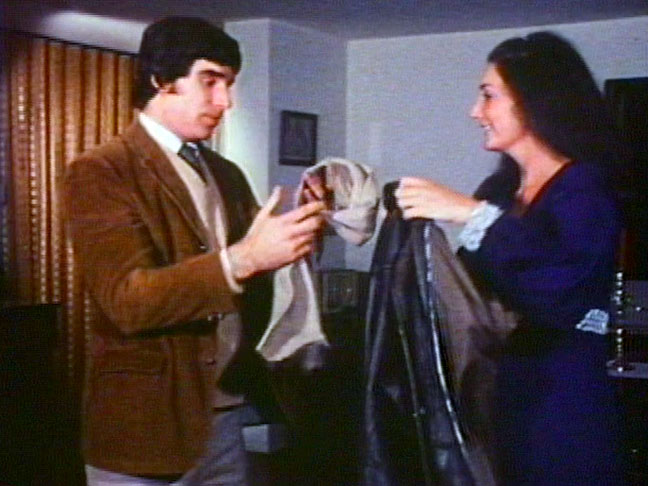 Harry and ‘Jean Roman’, in ‘A Time to Love’
Harry and ‘Jean Roman’, in ‘A Time to Love’
Quite why Harold went to a downtown brothel to make contact with ‘Jean Roman’ is unknown. Through Harry Reems, Harold had access to countless young porno females, yet in June 1971, he showed up at a downtown massage parlor, sat on a bed with a young woman calling herself ‘Jean Roman’, and offered her a part in his film. Years later, Harry Reems – who featured in all her scenes – only remembered her vaguely. He thought Harold might have first known her from a loop or two that she made with him and subsequently tracked her down to the brothel. Harry recalled her as being no-nonsense, efficient, cool – and thoroughly indifferent to his charms. He remembered that Harold was pleased with her performance, paid her $150 for her work, and didn’t think he’d see her again. Despite her fifteen-minute sequence, ‘Jean Roman’ was not mentioned in the film’s credits, nor did any other name in the credits refer to her.
And then eighteen months after the scenes were shot, Harold was called into court to identify her in a high-profile divorce court case. Harold lamented to friends at the time that he knew little about her. In fact, it was only in court that he learned her real name for the first time: ‘Jean Roman’ was Joyce Rosenzweig.
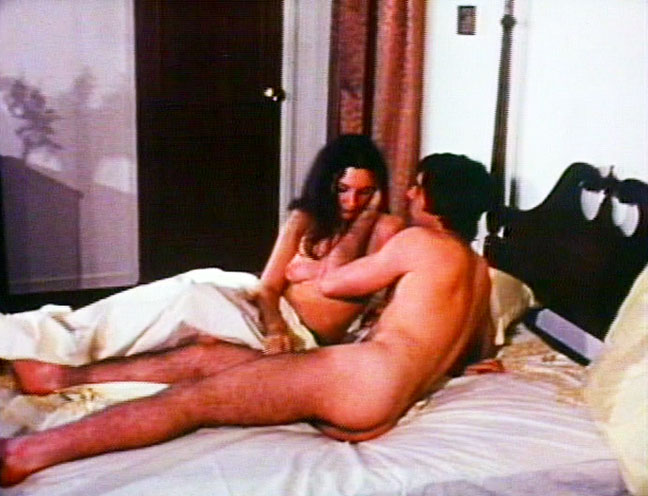 Harry and ‘Jean Roman’, in ‘A Time to Love’
Harry and ‘Jean Roman’, in ‘A Time to Love’
*
Rewind – Joyce Rosenzweig
Joyce was born in the unlikely surroundings of Fort Jefferson, the largest all-masonry fort in the United States, located 70 miles west of Key West, Florida. A few years later, her father, a military man, moved the family to the Bronx.
Her childhood was bittersweet. She was close to her father, but distant and detached from her mother. As Joyce saw it, her mother wasn’t a nurturing, emotional, or warm person. Her father adored his daughter and over-confided in her, telling her he’d married too young, the result of a scheme by Joyce’s mother and maternal grandmother to trick him into an early marriage. He told Joyce that his wife’s lack of affection for him pushed him into affairs with other women, such as his office assistants. As grateful as she was for her father’s trust, his secrets were a lot for her to carry. Her own relationship with her mother deteriorated, and the two clashed regularly.
It resulted in a tense and unhappy home life, which Joyce believes motivated her to seek love and meaning elsewhere. At first, that meant solo pursuits – yoga, guitar, photography – anything that didn’t require anyone else or involve any form of competition. As she grew older, it increasingly took the form of rebellion. At seventeen, she got an older boyfriend, Peter, but was forbidden from seeing him because he wasn’t Jewish. She reacted defiantly, cutting her hair and dying it red, changing her name to ‘Jody McKenna’, and running away from home. She pooled her babysitting money with a tearaway friend named Willow, and together they hired a Cadillac convertible, driving it down to Pennsylvania before the car blew up just outside of Harrisburg. Undeterred, they took the remainder of the cash, found their way to the nearest bus station where they bought the longest-distance one-way tickets they could afford, ending up several days later in Tucson, Arizona.
There, Joyce got two jobs: one as a carhop, wearing a short skirt and high-heeled boots, serving trays of food to customers in their cars, and another as a dance studio assistant. She eventually called her parents, reassuring them she was fine, telling them she was living in Nome, Alaska to put them off the scent.
Joyce and Willow spent the summer in Tucson before Willow fell in with a gang of American-Indian bad boys and getting into trouble with the law. Joyce decided she’d had enough and called her folks who sent her a one-way ticket to return home. Her father was relieved and happy to have her back, and he offered her the chance to resume her relationship with Peter. It was too late. Joyce had lived too much life in the short period away and she was now a different person. “Tell him I don’t want to see him,” she told her father.
When she returned to New York, Joyce enrolled in Queens College before moving into a NYU degree program. She remembers it was difficult time, describing herself as a loner, lacking social skills, without many friends, insecure, and defining herself by what others thought.
At 19, she found herself pregnant. It was an accident, and it wasn’t a happy discovery: she wasn’t planning to have kids, and the guy involved, Abraham, wasn’t someone she loved. Her father came to the rescue and flew her to Puerto Rico for an abortion. When she got there, she decided that she couldn’t go through with the termination, and so returned to New York where she grudgingly got married – in a tight girdle and white dress – and had a daughter.
After the wedding, the new family moved into a house in Far Rockaway, twenty miles outside of Manhattan, but the relationship was doomed from the start. They were fundamentally different people: Abraham was more materialistic, caring about status and success, and was intent on embarking on a corporate career. He wanted a big house and car, with a perfect suburban wife who went to the beauty parlor every week, and would be a doting mother to his children. Joyce, on the other hand, was becoming spiritual and questioning, interested in yoga and vegetarianism, and growing sprouts in her living room. People told her she was crazy for not being happy with such an ambitious man, but she had no interest in a suburban middle-class life. To make matters worse, Abraham had shown a controlling and manipulative streak, insisting that she start living life his way. She recalls that every day was like walking on eggshells.
They had a second child but, by then, were living increasingly separate lives. Just as her father had done, Joyce sought sexual affection from other partners. The couple separated: Abraham moved into a bachelor apartment on the Upper West Side, while Joyce took the girls to live in North Bellmore, a nearby town on Long Island. It was a path that led her to seek occasional work in the massage parlor where Harold met with her and invited her to appear in ‘A Time to Love.’
*
1973 – Joyce and Abraham: Divorce Court
It had been Joyce who filed for divorce from Abraham.
In her court filing, she alleged “cruel and inhuman treatment” charging that her husband had beaten her, blackening her eye in one assault when he was visiting the children, and accusing her of infidelity – an allegation she insisted was false. Abraham counter-sued, seeking custody of their daughters.
Initially the case attracted only minor press attention, but on January 26th, 1973, during the hearing, attorneys for Abraham approached State Supreme Court Justice Martin Evans and asked if they could screen a 15-minute excerpt from a pornographic feature film, ‘A Time to Love.’ The sequence was described by the Daily News as showing “a couple – one of them Ms. Rosenzweig – engaged in unusual sex acts.” As a teaser, the attorney showed the judge four pornographic still photos each showcasing Joyce.
The judge accepted the request and ordered the film to be marked as evidence. It was an unprecedented decision: veteran court employees reported that they couldn’t remember a motion picture being offered in evidence in a divorce case before. A short while later, the court lights were dimmed, and the X-rated film unspooled.
At the end of the showing, Joyce reacted angrily: “I am not that woman,” she retorted. The newspapers loved the story and reported it with photographs. Joyce was described as “an attractive brunette” and “porn cutie.” Inside the court, confusion reigned: was the woman filing for divorce really the same as the sex film actress on screen? The call went out to find the only person who could provide the answer: Harold Kovner, the director of the film.
Harold duly turned up the following week and confirmed that Joyce (now described in the newspapers as a “lush brunette” and a “sex bomb”) was indeed ‘Jean Roman’, the actress in his film.
But what happened next surprised everyone. The court adjourned for lunch, and Joyce and Abraham met privately with their legal representation. When they returned to court, the ex-couple were arm-in-arm, and Joyce announced that she was withdrawing her suit – and had agreed to several of her husband’s stipulations: one of these forbade her from allowing a man to stay overnight in her Long Island home while the children were there, and another required her to undergo psychiatric treatment. In return, Abraham would pay her $1,100 per month in child support.
The judge declared himself satisfied, and called an end to proceedings. According to newspaper reports, “the couple rushed into each other’s arms.”
*
Fast Forward – Joyce Rosenzweig
Whatever the newspapers reported at the time, today Joyce remembers the end of the court case rather differently. The divorce had been an ugly and unpleasant experience, made worse by the spotlight of the press. She claims that the financial – and behavioral – settlement with Abraham was structured to make sure she stayed dependent on him as he still wanted to get her back: “It was a nightmare, it was so horrible,” she remembers.
After the divorce, Joyce was aimless, not knowing who she was or what she wanted. Suddenly she was a single mom, looking for a new place to live, so she picked a spot on the map and started over. She also needed a job, and learned about a V.A. hospital close to her new home. The woman running the Occupational Therapy department asked if she had any experience – she didn’t – but they desperately needed help, so she was offered a job. It was a different life, and she didn’t have a plan, but she says things worked out.
After a period of being single, she met a Japanese man. It wasn’t a romantic connection, but they married “for paperwork reasons.” And then she had a spiritual experience: one day, she went into a trance-like state, seeing her whole life at once in all its pain and joy. She came across ‘Be Here Now’, the seminal 1971 book on spirituality, yoga, and meditation, written by the American yogi and spiritual teacher Ram Dass. Her life changed overnight: she renounced her former ways, joined an ashram, giving away everything – her home, car, clothes, and all trappings of material wealth. She took a different name, and lived in the ashram for the next 12 years.
Today she’s a retired occupational therapist and part-time yoga teacher. “I learned a very powerful lesson. Everything I was looking for out there is here in me. I think anyone who finds something good in life has to go through something hard to get there – to hit bottom before they can rise. Sometimes you need the darkness to find it.”
*
Next week: An epilogue, featuring the mob, allegations of child pornography, a landmark court case… and Vanessa del Rio.
*


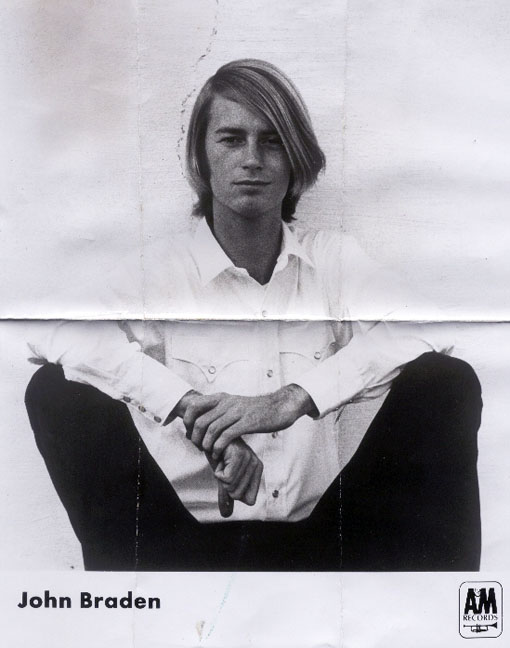
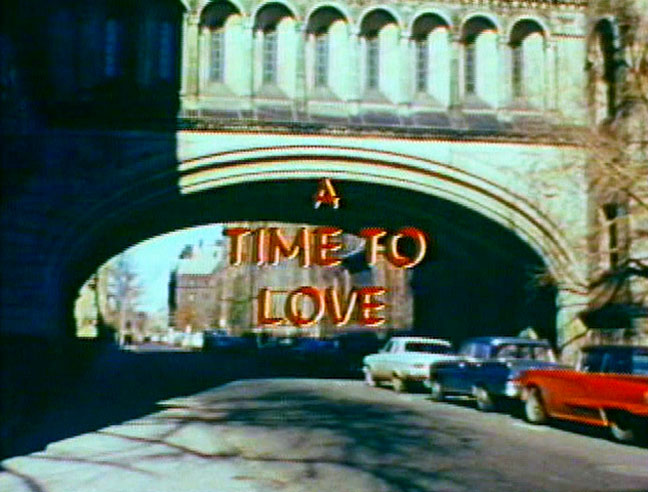
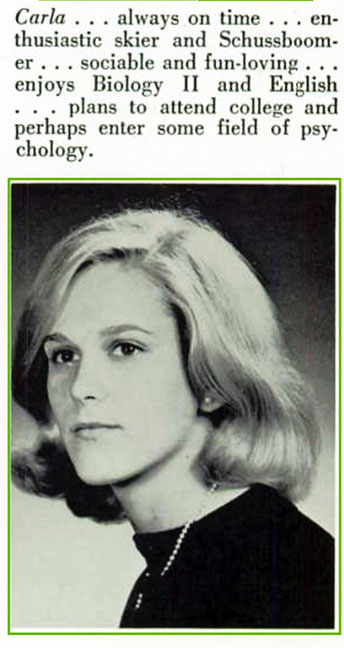

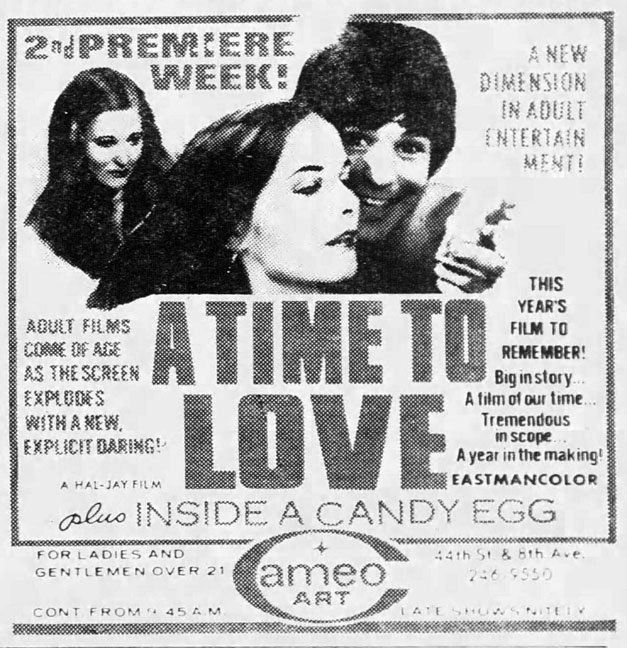

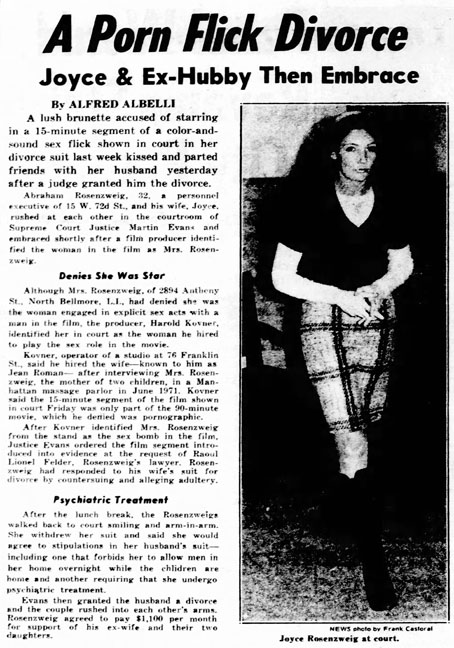
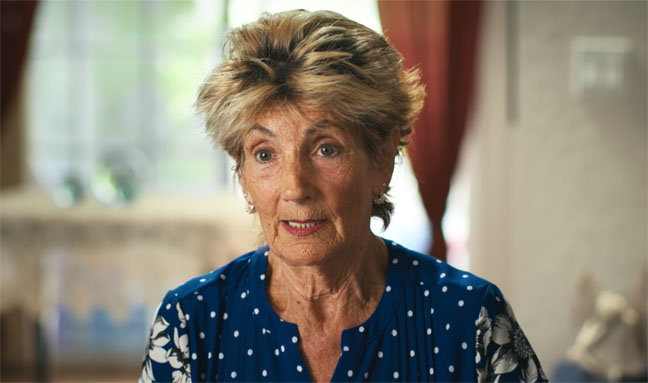
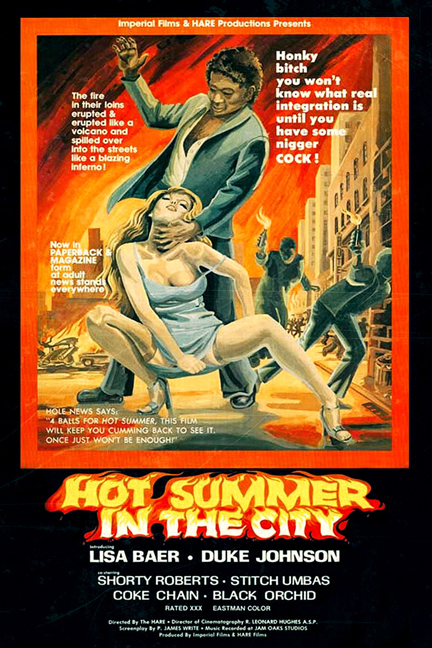



Truly epic. The story of one – pretty anonymous – life, and how it criss-crosses America in the 20th century has been told here in a sprawling, lengthy tale of humanity. Small characters and eccentric wannabes come and go, and the we see how each life plays out after their time on the main stage ends.
An impressive feat.
Joyce’s life is an inspiration. She overcame a difficult beginning and it was fascinating to hear how she navigated the divorce and life after. I hope she is enjoying a happy retirement – it’s fully deserved.
What a beautiful woman Joyce is! I was so keen to hear how her story ended, and this installment didn’t disappoint.
This story has been such a trip.
Congrats to all for the research and story-telling. This is a great achievement.
CEDAR HOUSTON! I’ve wondered about her for years, and am amazed to learn more about her. What an Easter egg this was. THANK YOU!
Awesome Article Keep Up Good Work
DEEPLY enjoyed this meandering, yet remarkable story that carefully details what influenced and inspired “Elusive Harold Kovner.”
Joyce and her insights, wisdom, and sage advice are so heartfelt and powerful. It’s also of interest that so many folks who took part in exploitation, cult erotic, and XXX hardcore films moved on towards more mainstream “helping professions.” Perhaps they were discovering pathways which further explained the profound connection/conundrum between mind, body, and spirit?
Thank you Rialto Report for your latest Sunday Installment… Amazing journalism.
– Thelma
Terrific work you’ve done putting this together. Thoroughly enjoyable read.
I echo the first posters views. Additionally, I should have known Cedar/Carla as she was in the same class and from the next town over. Probably friends did.
All in all, another terrific story from Rialto Report.
I’m flashing on a famous STAR TREK episode by Harlan Ellison where a homeless guy sacrifices himself and essentially help save the world. In the end, the time lord gate calls his impact on history “negligible” but Capt. Kirk (and Ellison) know otherwise. And these pioneers Rialto details strike me that way.
Thanks for another great story!
I knew John Braden in the early 1970s. He, indeed, composed music for Off-Off-Broadway shows. I remember one called “The Babs and Judy Show.” Our paths crossed when we were both in an art piece by the late Scott Burton called “Behavioral Tableaux,” which premiered at the Whitney Museum in 1972. By that time, though, Burton had fired me because Braden kept tickling me in our scenes and I couldn’t stop chortling.